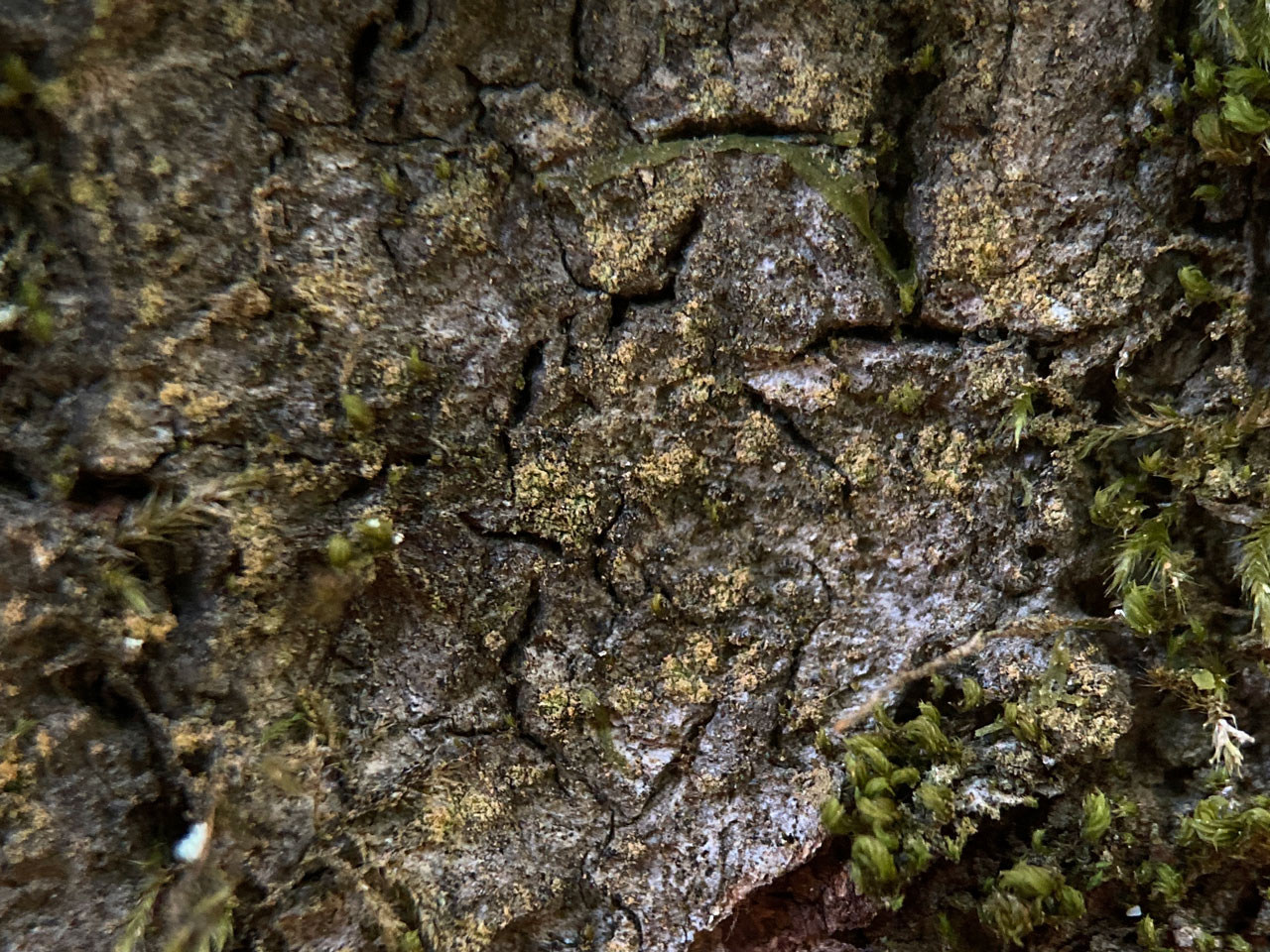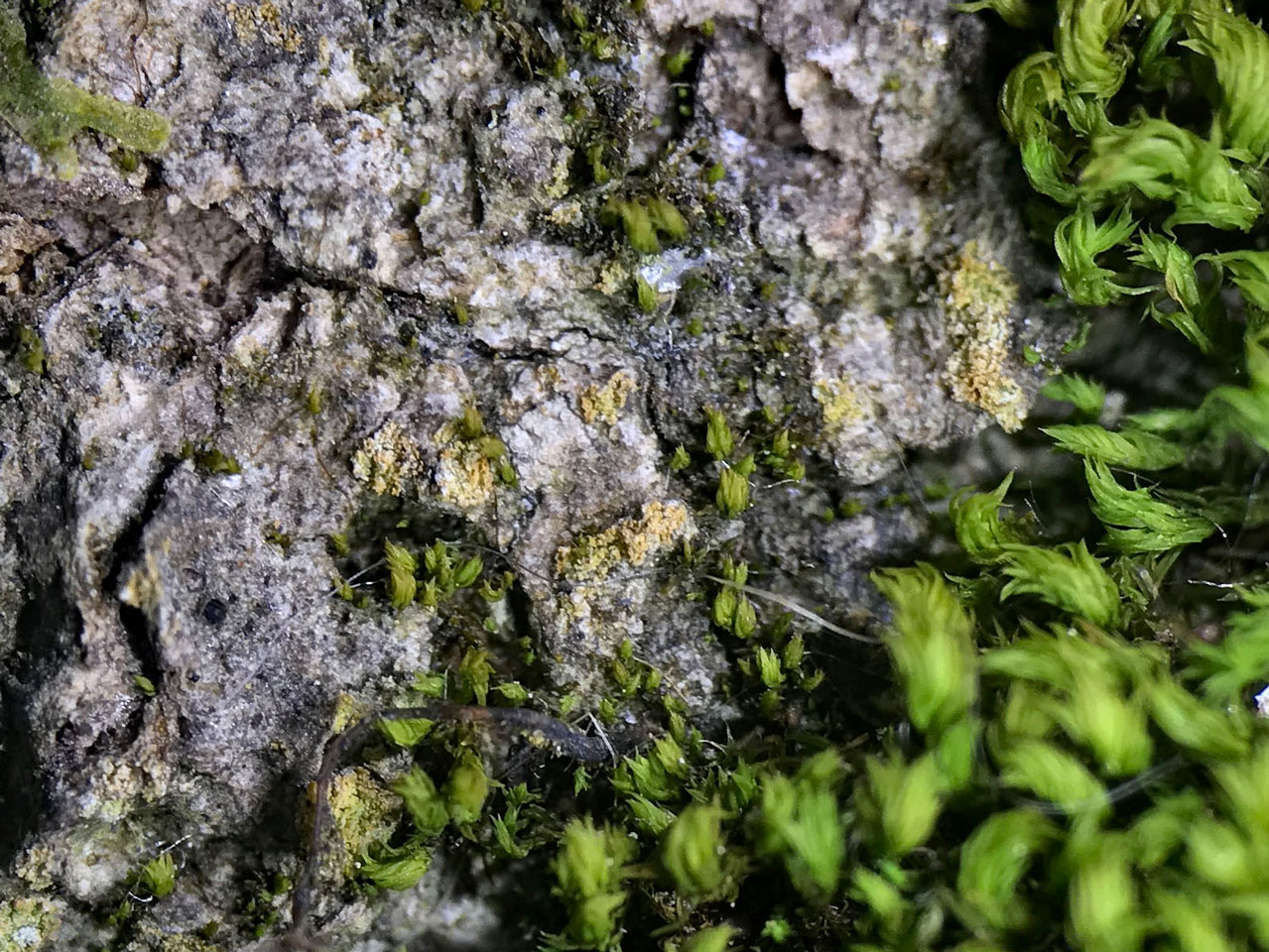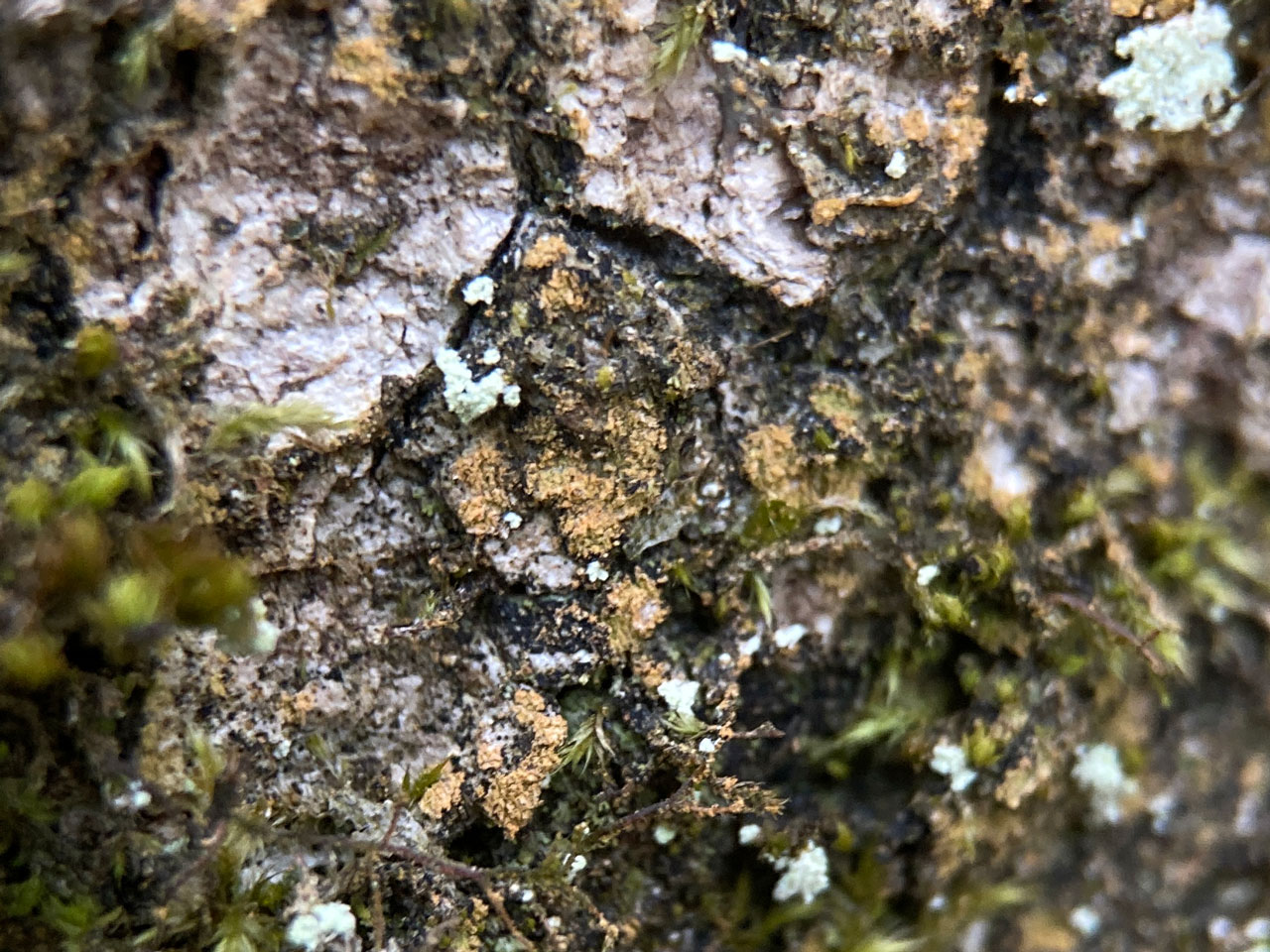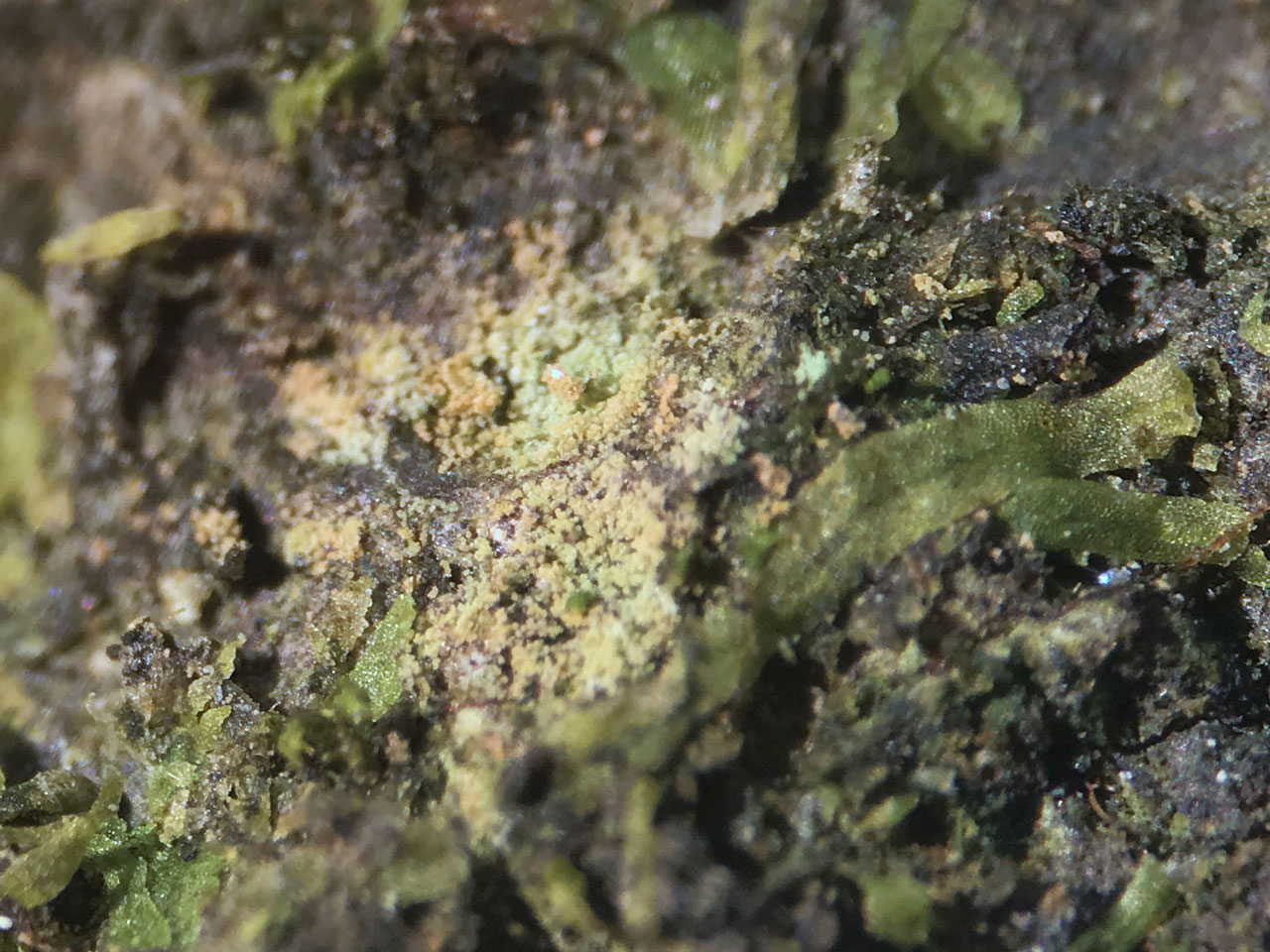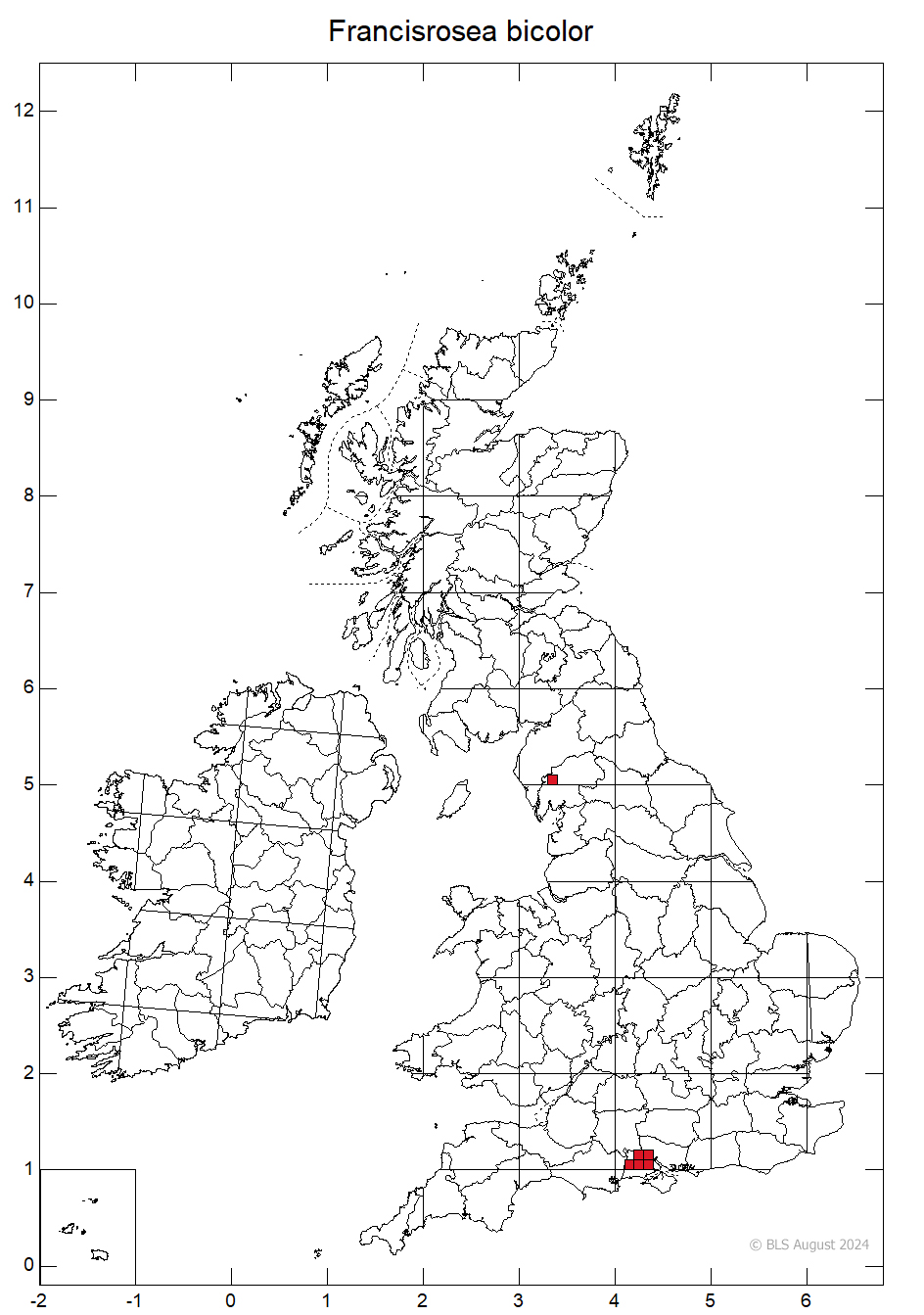Francisrosea bicolor
This lichen was long known to Francis Rose and Neil Sanderson in the New Forest, where it occurs widely, mainly in wound tracks in senescent Beech trees in old growth pasture woodlands. It is similar to Thelopsis corticola with rounded to elliptical and orange-ochre soralia, but the colour is darker, internal green colours are always visible and the individual soredia are visibly bigger and are loosely rather than tightly packed. This lichen is always sterile and its identity was a mystery. It tended to be called “Opegrapha multipuncta”, as it was clearly not Thelopsis corticola in the New Forest, but did not match this species either, while it was probably being misidentified as Thelopsis corticola elsewhere. Sequencing by Damien Ertz (Ertz et al, 2021), revealed that it was in or close to the Gyalectaceae, but not closely related to any other sequenced species, requiring a new genus. The genus was named Francisrosea in honour of Francis, who contributed so much to the under standing of the diversity and ecology old woodland lichens in Britain.
Thallus inconspicuous, immersed in bark, only visible due to the soralia. Soralia erumpent, at first punctiform, later becoming ± rounded to elliptical in outline, erose, slightly convex and elevated above the substratum, 0.2–0.8 (–1) mm diam., pale greenish inside, orange-ochre at the surface and mainly at the margins, discrete, scattered or rarely becoming confluent in clusters of up to four and forming patches up to ca 1.5 mm diam. Soredia without projecting hyphae, (25–) 30–50 (–70) μm diam., composed of colourless smooth hyphae 4–6 (–7) μm diam., I−, KI− and trentepohlioid cells 6–13 μm diam. in short chains of 2–6 (–8) cells. Crystals absent (polarized light). Apothecia and pycnidia unknown. Chemistry: no compounds detected with TLC.
Distinguished by the inconspicuous thallus with small discrete erumpent soralia, that are pale greenish inside but orange-ochre at the surface. Formerly confused with Thelopsis corticola, which is usually found sterile; it also has ochre-coloured soralia but these are finer and more compacted, with individual soralia 10–17 μm across, and of a more even colour with the deeper orange tints mostly absent and the internal green colouring paler and less often visible unless damaged, and a thallus that is always visible at least near the soralia. It is also typically found in more stable rain track communities.
Most frequently found in wound tracks on senescent Beech in old growth pasture woodlands, but has also been found in similar habitat on Oak.

Locally frequent in the New Forest (Hampshire) Beech pasture woodlands and confirmed from an old Oak in parkland in Cumbria, likely also present elsewhere and may acount for some of the outlying records of Thelopsis corticola.
Not assessed but seems to be an old growth dependant species and appears very rare outside of the New Forest.
Cannon, P., Coppins, B., Aptroot, A., Sanderson, A. & Simkin, J. (2024). Ostropales genera I, including Absconditella, Belonia, Clathroporinopsis, Corticifraga, Cryptodiscus, Cryptolechia, Francisrosea, Gomphillus, Gyalecta, Gyalidea, Gyalideopsis, Jamesiella, Karstenia, Nanostictis, Neopetractis, Pachyphiale, Petractis, Phialopsis, Phlyctis, Ramonia, Sagiolechia, Secoliga, Sphaeropezia, Spirographa, Stictis, Thelopsis, Thrombium and Xerotrema. Revisions of British and Irish Lichens 38: 1–60.
Ertz, D., Sanderson, N. & Lebouvier, M. (2021). Thelopsis challenges the generic circumscription in the Gyalectaceae and brings new insights to the taxonomy of Ramonia. Lichenologist 53: 45–61.
Text by Neil Sandeson based on Cannon et al (2024)
